August 14, 2023
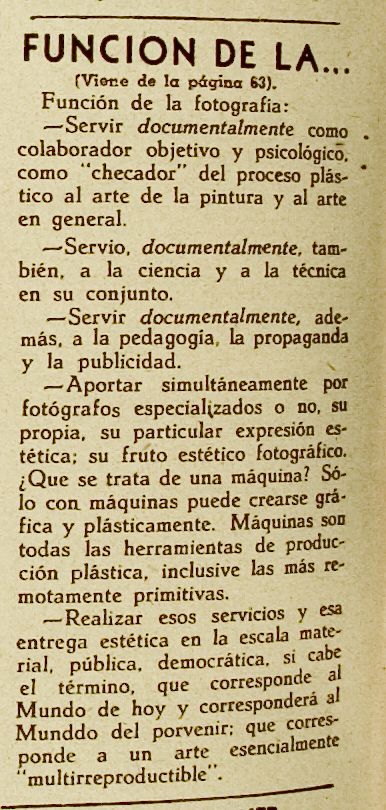
David Alfaro Siqueiros. “Función de la Fotografía.” Hoy (Mexico City), no.441, 1945.
ICAA Record ID: 760429
“In the vestibule there is a mirror, which faithfully duplicates appearances. Men often infer from this mirror that the Library is not infinite—if it were, what need would there be for that illusory replication? I prefer to dream that burnished surfaces are a figuration and promise of the infinite.”
— Jorge Luis Borges, The Library of Babel
Photographs
August 19 is International Photography Day, and I photograph paper; the delicate nature of paper is incontrovertible. Paper succumbs: to ink, inadvertent mishandling, moisture, the passage of time, the voracity of insects, and—well—scissors beats paper. I care for photographs of paper others have taken. I store and process them. I negotiate with the skew, crop, tone, saturation, clipping, flare, shadows, texture, sharpness, noise, dust, and other artifacts of digital imaging. In reference to the ICAA’s Documents of Latin American and Latino Art (Documents Project), the repository I tend to as a Digital Imaging Associate, this photographic logic as pictorial subtext makes visible the structure of generosity to which global access to these texts is indebted. Valuable as documents themselves, they are vestiges of the work of over 150 researchers, historians, art critics, cataloguers, librarians, and other professionals who comprised the first phase of the Documents Project. Here, the photographic medium becomes generative as a means to imagine the web of connections that animate the digital archive, which in turn becomes a place for being present with a sense of knowing that not every text is legible and not every language has yet to be brought into meaning. What follows is a speculative bibliography of photographs.
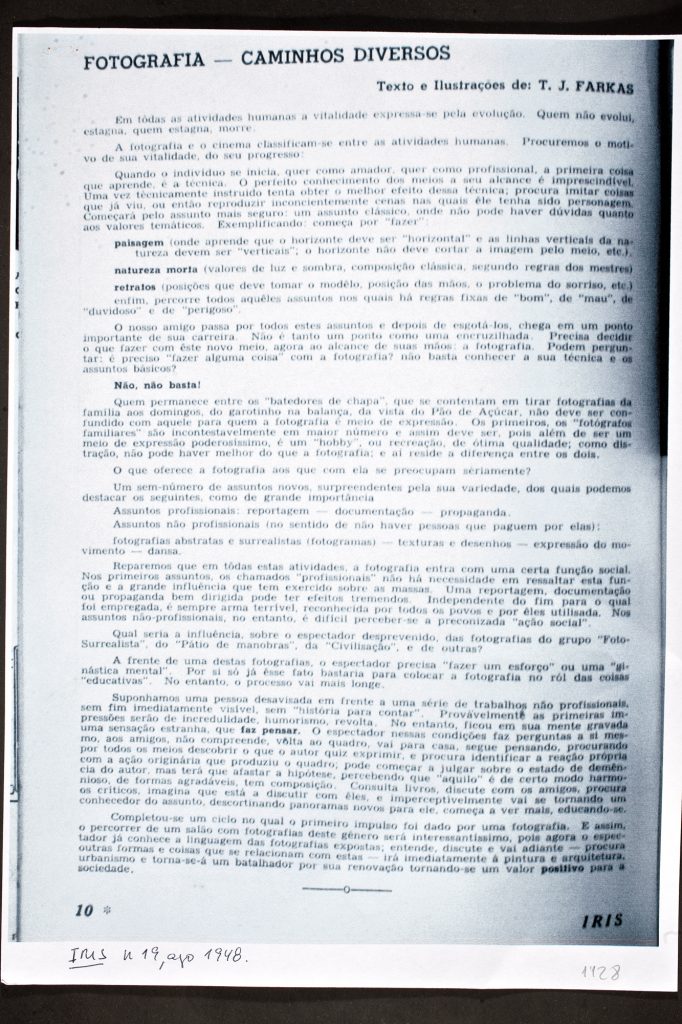
Thomas J. Farkas. “Fotografia – caminhos diversos.” Íris (São Paulo, Brasil), n.19, 1948.
ICAA Record ID: 1110873
“Fotografia: Camhinos diversos” by the Hungarian photographer (based in Brazil) Thomas Farkas photographed, printed on copier paper, and rephotographed.
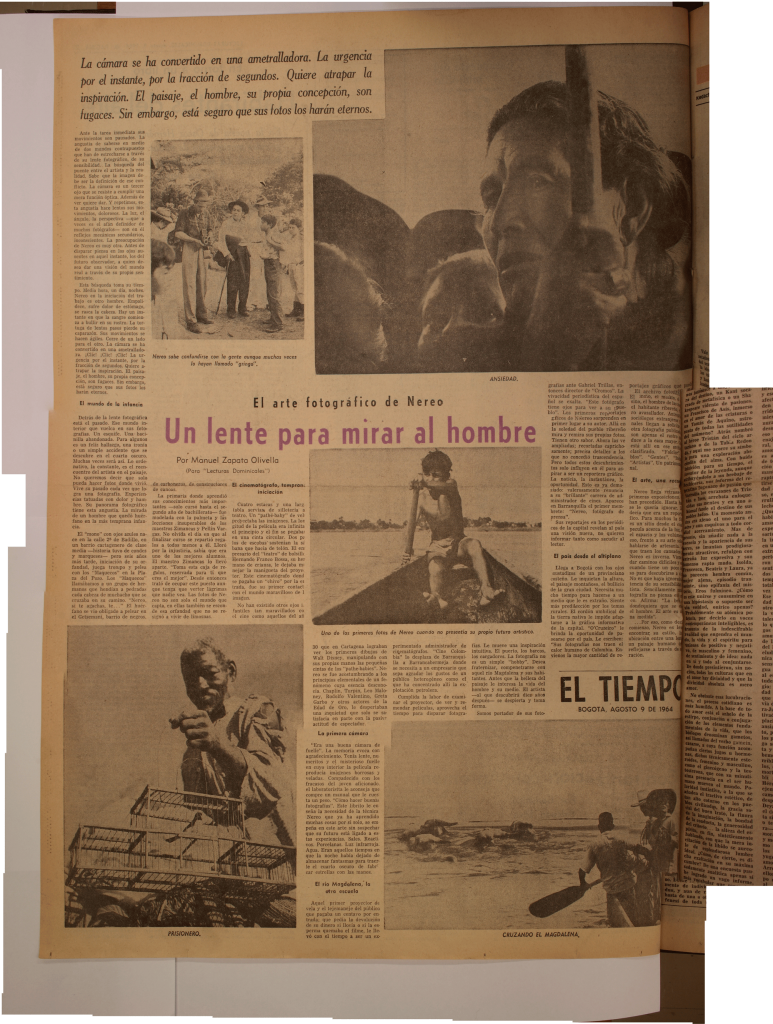
Manuel Zapata Olivella. “Un lente para mirar al hombre : el arte fotográfico de Nereo.” El Tiempo: Lecturas Dominicales (Bogotá, Colombia), 1964.
ICAA Record ID: 1132885
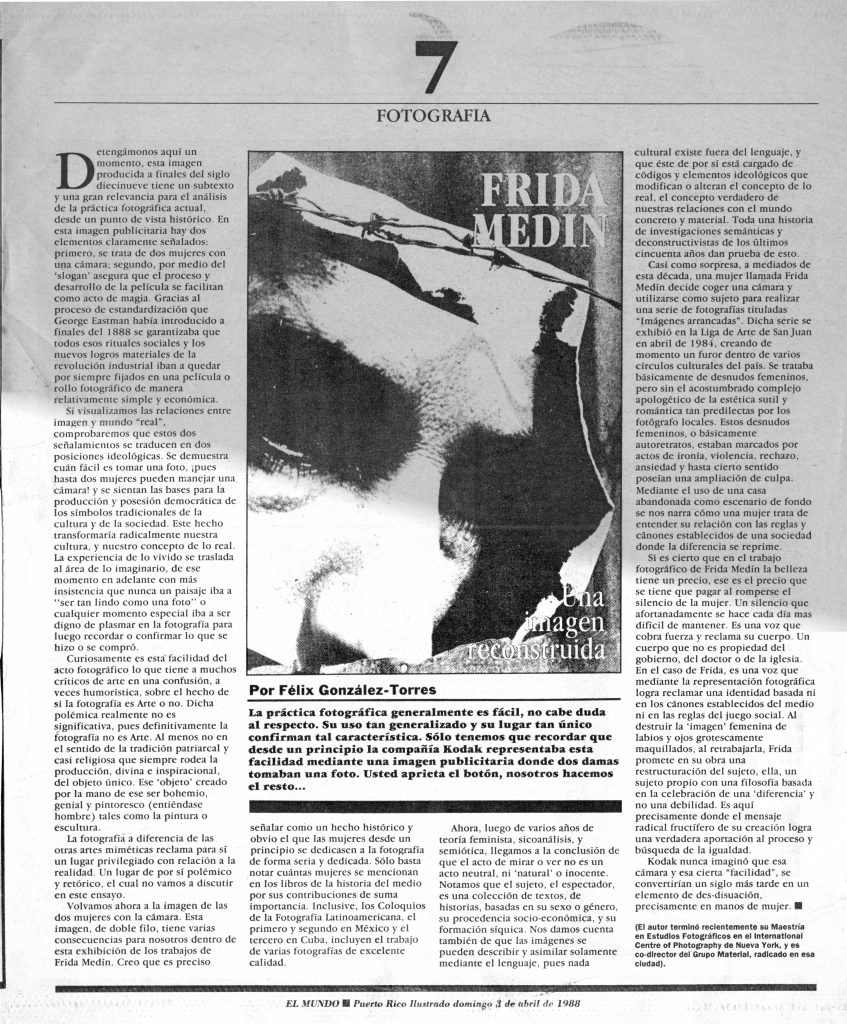
Felix Gonzalez-Torres. “Frida Medín : Una imagen reconstruida.” El Mundo, Puerto Rico Ilustrado (San Juan, Puerto Rico), 1988.
ICAA Record ID: 1055114
A shadow diagonally intersecting Felix Gonzalez-Torres’s reflection on Frida Medín accentuates a physical relation between what is imaged and the conditions under which its photograph was taken; inconsistent room illumination via an open window, perhaps. Following a preexisting shadow in Medín’s photograph, it connects the two works, intertwining their visual narratives. What is considered a defect —a rupture at the event of digitization— thus accentuates the playful ambiguity between document and photograph, blurs the boundaries between the two, and creates a space for the relations that carry and are carried by images.
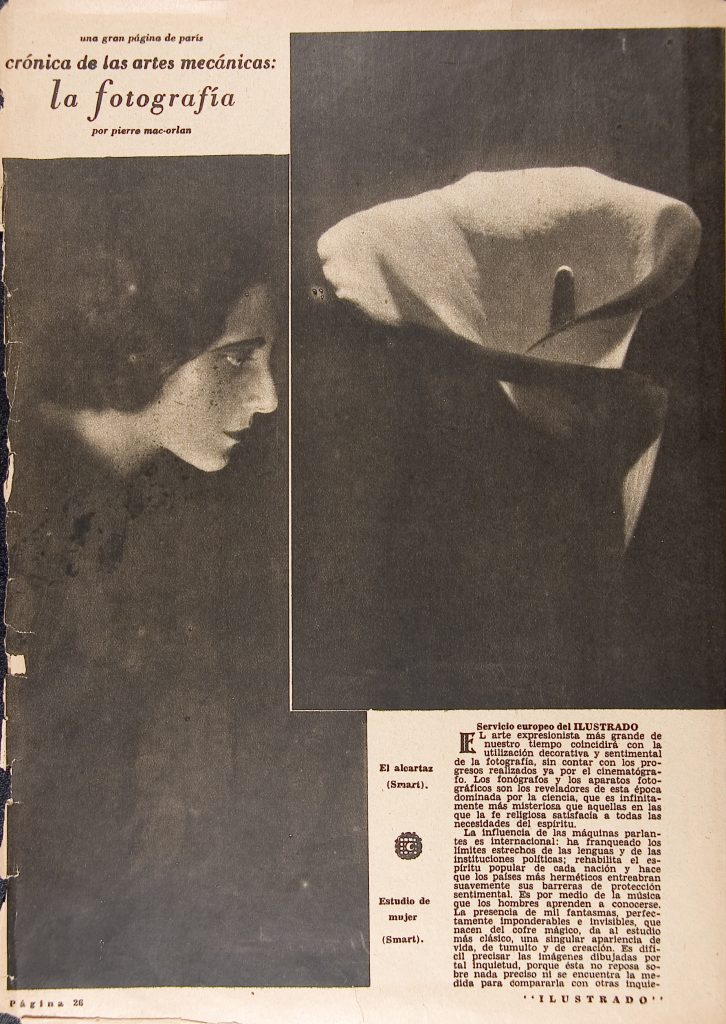
Pierre MacOrlan. “Crónica de las artes mecánicas: La fotografía.” El Universal Ilustrado: Un semanario mexicano con espíritu (Mexico City), 13, no.642, 1929.
ICAA Record ID: 754924
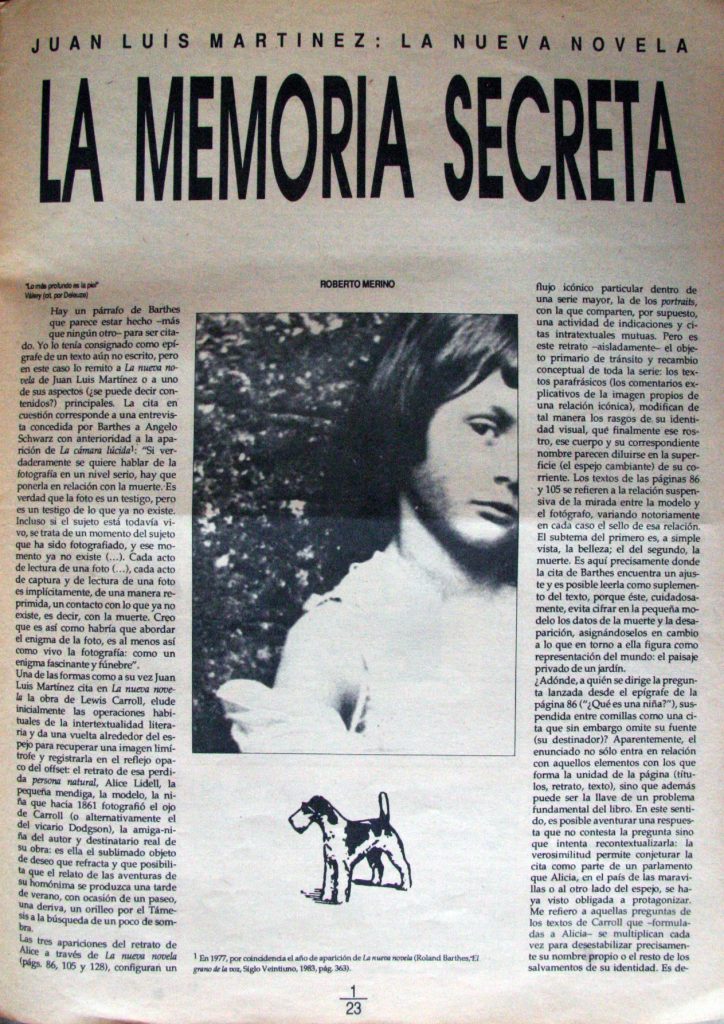
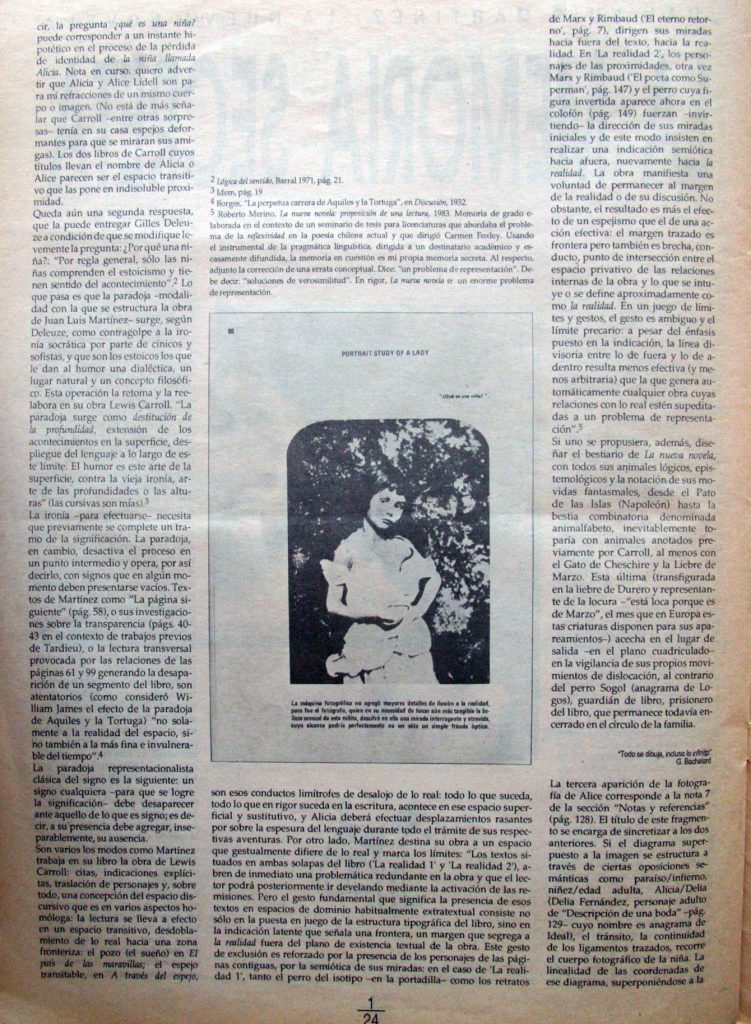
Roberto Merino. “Juan Luis Martínez: La nueva novela la memoria secreta.” Número Quebrado (Santiago, Chile), no. 1, 1988.
ICAA Record ID: 738166
The text “Juan Luis Martínez: La nueva novela la memoria secreta” (1988) refers to the use Martínez makes of photography, the one that Lewis Carroll took from Alice Lidell (the lost girl who in 1861 went through the looking glass to Wonderland), relating it, in this way, with the operations of secret intertextuality in the work of Martinez (hidden quotes, ultra-coded, and without indicators).
“In the phenomenological pursuit of a poem by [Henri] Michaux (The Space in the Shadows), [Gaston] Bachelard writes: ‘Outside and inside are both intimate; they are always ready to be reversed, to exchange their hostility. If a border-line surface exists between such an inside and outside, this surface is painful on both sides.’ (The Poetics of Space, 1957). Twenty years later, on page 113 of La nueva novela, he anonymously reappears: ‘In this small frame, the outside: (the blank space of the page) and the inside: (the photograph) is soon to be inverted, to exchange their hostility. If there is a border-line surface between such an inside and such an outside, that surface is painful on both sides.’”

Edward Weston. “Conceptos del Artista.” Forma: Revista de Artes Plásticas (Mexico City), 1928.
ICAA Record ID: 748739

Tom Morton. “Un sueño de tí.” Juan Pablo Echeverri, 10-14. (Bogotá, Colombia), 2007.
ICAA Record ID: 1134598
“Un sueño de ti” is the title of the curatorial text written by English critic Tom Morton for the exhibition Diva’s Life (2007), featuring work by the Colombian artist and compulsive self-portraitist Juan Pablo Echeverri. In his photography, there is no essential Echeverri but a multitude of possible Echeverri(s) grouped into one.
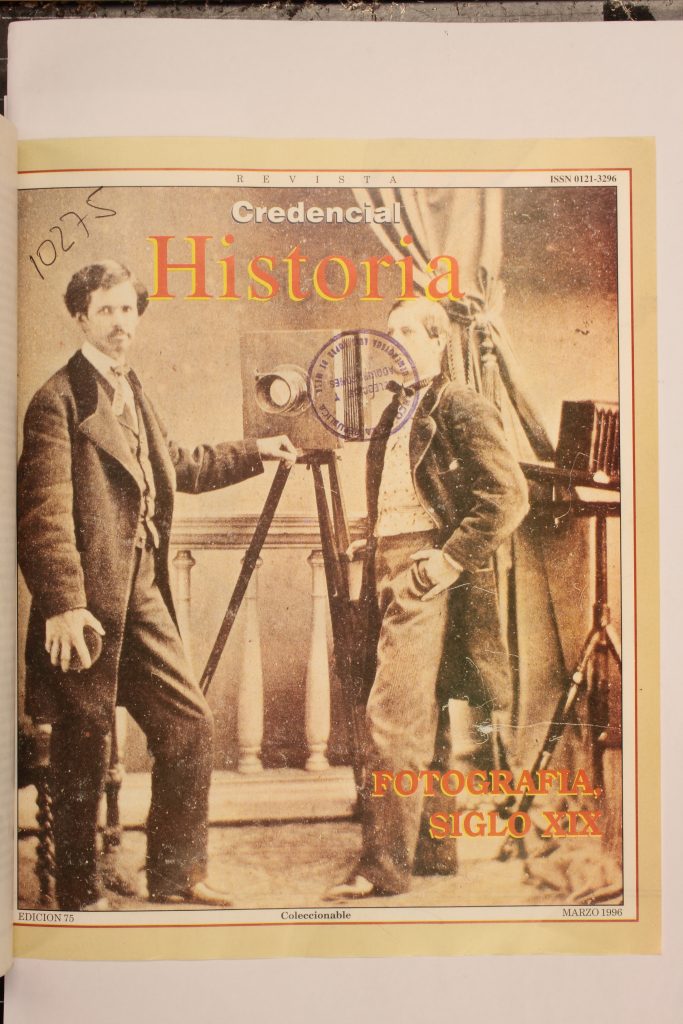
Pilar Moreno de Ángel. “El ‘Papel Periódico Ilustrado’ y sus creadores: Urdaneta, Paredes, Racines y la fotografía.” Revista Credencial Historia (Bogotá, Colombia), 1996.
ICAA Record ID: 1131550
Junior Fernandez is the Digital Imaging Associate at the ICAA.

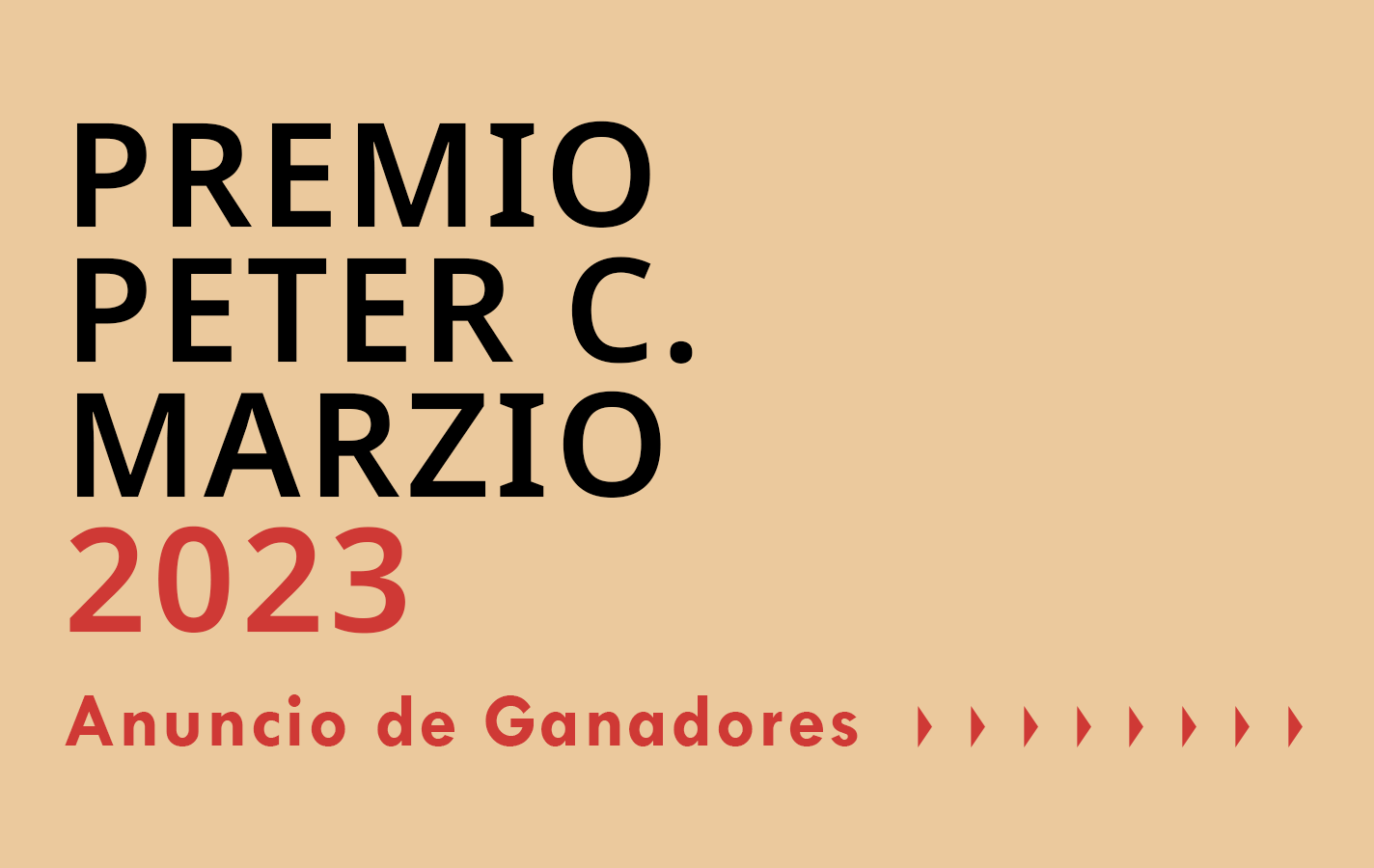
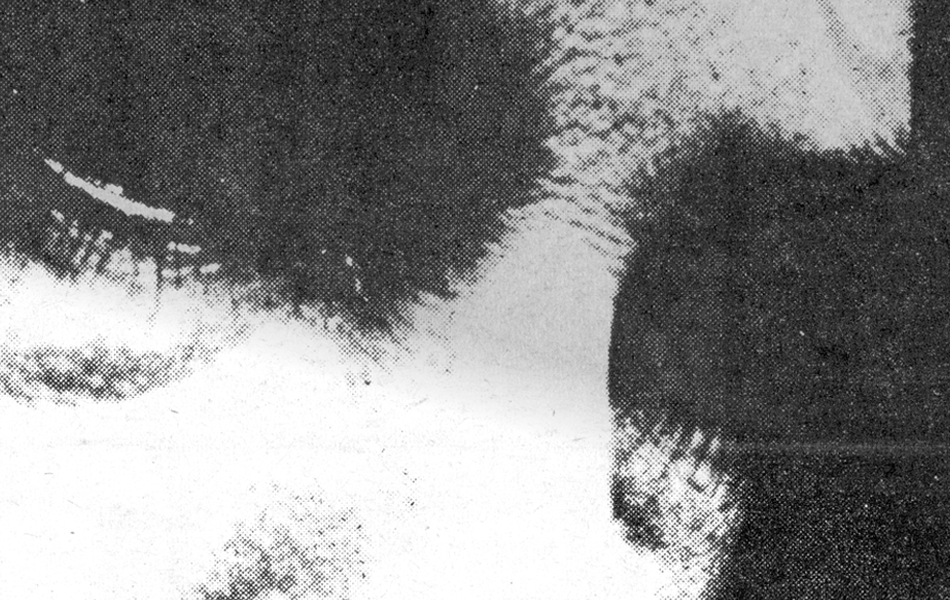
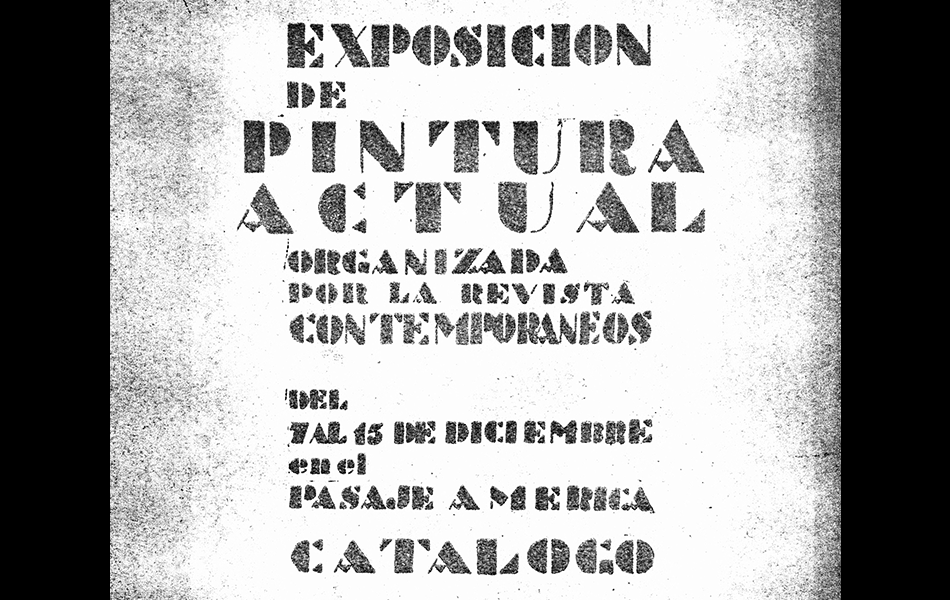

No hay comentarios todavía